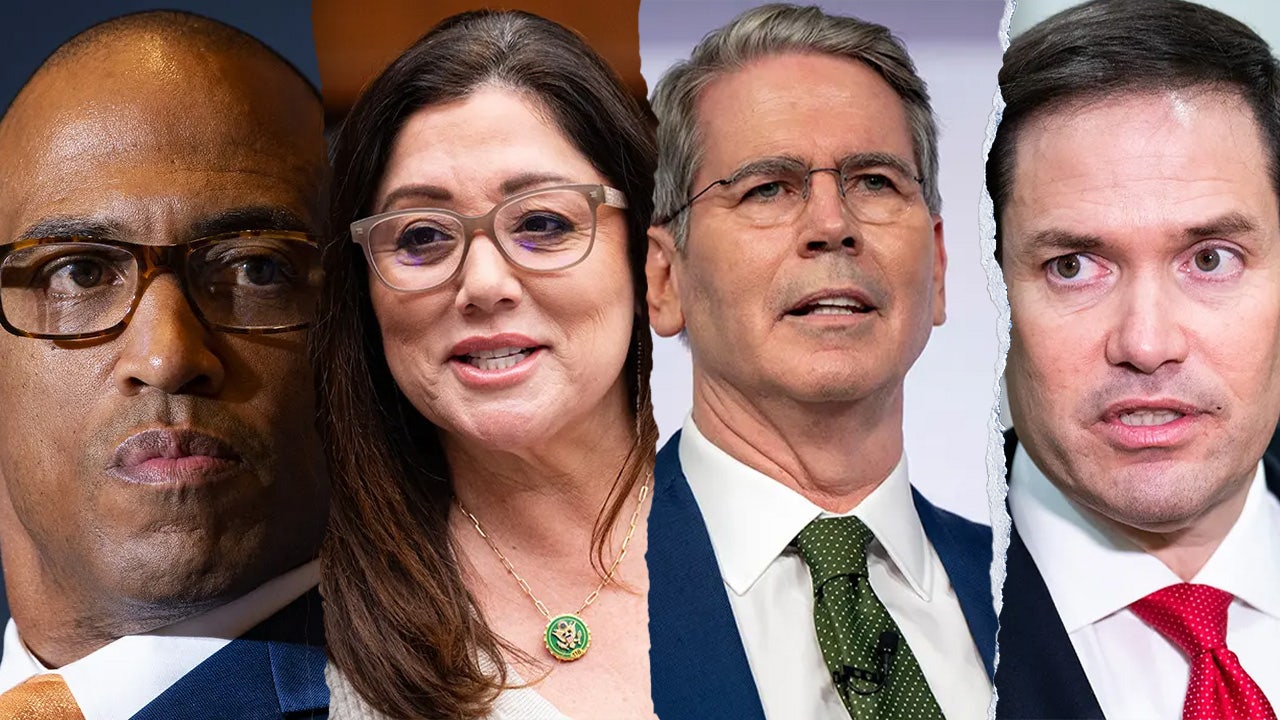Finance
Bajaj Finance, Bajaj Finserv shares jump up to 8% today; here’s why

Shares of Bajaj Finance Ltd soared 7.93 per cent to hit a 52-week high of Rs 7,916.70 in early trade on Tuesday against a previous close of Rs 7,335.35. The stock has gained more than 12 per cent in the past five sessions and around 20 per cent on a year-to-date (YTD) basis.
The non-banking financial company (NBFC) said its assets under management (AUM) grew 32 per cent to Rs 2,70,050 crore as of June 30 compared with Rs 2,04,018 crore as of June 30, 2022. The NBFC recorded highest ever quarterly increase in its AUM of approximately Rs 22,700 crore in Q1 FY24.
Deposits book stood at approximately Rs 49,900 crore at June-end against Rs 34,102 crore in the year-ago period, up 46 per cent. Customer franchise as of June 30 stood at 72.98 million compared with 60.30 million as of 30 June 2022. Bajaj Finance recorded highest ever quarterly increase in its customer franchise of 3.84 million in Q1 FY24.
“Bajaj Finance delivered robust quarterly numbers for Q1 FY24 with strong loan growth and healthy new customer acquisition. AUM has also shown significant growth in the said quarter. On technical setup, the stock price is in uptrend and may continue its rally to touch the levels of Rs 8,000 in near term,” said Ravi Singh, Vice-President and Head of Research at Share India.
“The stock is very bullish but also overbought on the daily charts with next resistance at Rs 8,074. Investors should book profits at current levels or hold till daily support of Rs 7,600 is not broken on a closing basis,” said AR Ramachandran from Tips2trades.
Watch: ideaForge Technology IPO GMP firm ahead of share allotment; check allotment status & latest grey market premium, and more
Around 2.18 lakh shares changed hands today on BSE, which was way more than the two-week average volume of 32,000 shares. Turnover on the counter came at Rs 170.98 crore, commanding a market capitalisation (m-cap) of Rs 4,76,312.96 crore. There were 1,91,202 buy orders today against sell orders of 40,252 shares.
The counter’s 14-day relative strength index (RSI) came at 78.30. A level below 30 is defined as oversold while a value above 70 is considered overbought. The company’s stock has a price-to-earnings (P/E) ratio of 43.16. It has a price-to-book (P/B) value of 8.62.
The scrip has a one-year beta of 1.38, indicating high volatility.
Bajaj Finserv also gained today in what could be seen as a positive rub-off effect. The stock jumped 5.99 per cent to hit a day high of Rs 1,632.95.
Its 14-day RSI came at 78.30. The stock has a P/E ratio of 43.16 and P/B value of 8.62. The counter has a one-year beta of 1.42, suggesting high volatility.
Both the Bajaj stocks (Finance and Finserv) went ex-dividend on June 30.
Meanwhile, Indian equity benchmarks extended their gains record run today by scaling fresh all-time high levels. The domestic indices were up led by gains in financials, technology, banks and consumer durables.
Also read: Kansai Nerolac Paints shares trade ex-bonus; stock up 8%
Also read: Hot stocks on June 4, 2023: Bajaj Finance, Bajaj Finserv, IDFC, Suzlon Energy, Tanla Platforms, and more
Watch: Buzzing stocks on July 4, 2023: Bajaj Finance, Eicher Motors, ITC, Radico Khaitan, Nykaa, others

Finance
Weekly finance Horoscope November 24 to November 30, 2024: Aries find success in investments; Cancer sees long-held goals materializing – Times of India

Aries
Though things would get better with time, the first half of the week might not deliver any appreciable cash benefits. Some entrepreneurs could find now to be the perfect time to launch fresh projects. You might pay off a bank loan and even clear outstanding bills. Though be sure to have professional guidance, success is probably in the stock market and speculative projects, so it is a good time to think about major investments.
Taurus
Your financial condition will be strong, which will help you to reach significant targets. This is the right moment to proceed with ideas to buy a new car or house. Some ladies might also buy jewellery. Resolve any money issues with a friend or sibling in early part of the week. It’s also a good time to raise money for your company; entrepreneurs might come across chances to land financial agreements with promoters.
Gemini
Your financial situation will let you make wise selections. You probably will find riches arriving from many different sources. For sound financial management, think about speaking with a professional. Women might inherit land or pay off all outstanding debt. You could also have to budget for your child’s schooling. Before completing any new partnership agreements, business owners should wait one day or two.
Cancer
Today you will find a decent wealth flow. You could realize several long-cherished goals when money pours in. These days you might get a car as well as some electrical appliances. Good time to donate money to a charity is the second part of the day. Investors in stock, trade, and speculative company will make good profits.
Leo
Though there won’t be any major financial issues, you should nevertheless keep careful with your expenditure. Good returns on previous investments will let you employ this money to seize fresh prospects. Some Leos will work out a financial problem with a pal. Talk about money carefully with siblings to avoid possible conflicts. Business owners will be successful in today’s fund raising and clearing of all outstanding debts.
Virgo
You can run with small financial problems that might compromise wise financial decisions. Think of wise trade, stock, or land investments. You can also get an inheritance meant to help with your finances. For money management, speaking with a financial professional could help. A few Virgos will work out a financial dispute with a brother. Later in the day you could perhaps decide to buy a new house or renovate your current one.
Libra
You might have small financial problems, so you should control your expenditure closely. Steer clear of costly goods and be careful while handling money for others. Some Libras can come across family conflicts about land today. You might also donate money for charity, especially in the afternoon. Dealing with assets and investments, be deliberate and patient.
Scorpio
You will not run out of money, which will help you to readily handle daily problems. New commercial alliances will provide consistent financial flow. Your spouse’s family might provide financial help as well as probably approval for a bank loan. Now is a fantastic moment to follow your ideas for trying your luck in stocks or trade.
Sagittarius
Today your financial situation will be strong, which will let you think about purchasing or selling real estate. Donations for charities would be best during the second half of the day. Now is a great time to start trying your luck in stocks, trading, or speculative enterprise. Some women will take care of family finances. Those in business selling technology, fashion accessories, or transportation will find good profits.
Capricorn
Expect financial possibilities today with reasonable returns on past investments. Buying electronic gadgets is best done in the later part of the day. Though you should perform careful study before making any major decisions, think about investing in property or speculative projects. Usually with the aid of their partners, entrepreneurs will find money; clients may pay any outstanding debts, therefore relieving financial burden.
Aquarius
Feel free to buy basics like household appliances. Businesspeople might get money from overseas, and right now real estate is a good investment. Anticipate more costs; so, it would be advisable to see a professional financial advisor. You could also settle a legal matter; the later part of the day is appropriate for giving someone in need cash assistance. Get ready for potential legal issues that can call for a big financial outlay.
Pisces
Today you won’t run across any significant financial problems. Given your means, you could think about looking for jewellery or gadgets. Still, this is hardly the day for speculative business. You could buy or sell real estate; the later part of the day is good for helping a friend financially, provided you make sure the money will be returned right away. Using promoters, business owners will effectively raise money.
This article is written by, Sidhharrth S Kumaar, Registered Pharmacist, Astro Numerologist, Life & Relationship Coach, Vaastu Expert, Energy Healer, Music Therapist, and Founder of NumroVani.
Finance
St. Augustine's says it will eliminate 50% university employees ahead of accreditation meeting

RALEIGH, N.C. (WTVD) — Saint Augustine’s University (SAU) announced Saturday it will eliminate several positions, including non-faculty and vacant, this month ahead of its significant accreditation meeting.
Last December, the Southern Association of Colleges and Schools Commissioner on Colleges (SACSCOC) voted to remove SAU from membership due to its financial status. The university’s appeal was denied in February and then in July, the SACSCOC arbitration committee reversed the decision and reinstated SAU’s accreditation.
The SACSCOC board will vote on the next step for the university in December.
In a news release, SAU said to ensure compliance with the Southern Association of Colleges and Schools Commissioner on Colleges and keep its accreditation, the school has reduced its expenses by approximately $17 million in fiscal year 2024 compared to 2023. Reductions, totaling 50% of university employees, include 67 staff positions (41% reduction); 37 full-time faculty positions (67% reduction); 32 adjunct faculty positions (57% reduction); and stopping several under-enrolled programs.
SEE ALSO | St. Augustine’s alumni hosts celebration amid canceled on-campus homecoming
The university also said it will be actively settling outstanding balances with vendors and adjusting various contrasts.
SAU also reported completing four financial audits for fiscal years 2021, 2022, 2023, and 2024, and restoring employee payroll and health insurance benefits.
The HBCU university — remaining millions of dollars in debt — secured a $7 million loan from Gothiuc Ventures with a high-interest rate. To get the loan, St. Aug’s put up much of the university’s main campus and off-campus properties as collateral.
Gothic Ventures tells ABC11 that the interest rate offered was determined by the financial difficulties faced by the university, which included a recent audit, historical revenue losses, and outstanding debt.
SEE ALSO | Saint Augustine’s University’s high-rate $7 million loan puts HBCU in jeopardy, finance experts say
Many, including SAU alumni and finance experts, are concerned about this loan.
“We are concerned about the partnership between Gothic Ventures and Saint Augustine University because if for any reason Saint Augustine is unable to repay Gothic ventures, the land will be lost and the university as we know it will cease to be,” alum Bishop Clarence Laney said.
The lawsuit against the board of trustees by the SaveSAU Coalition was also recently dismissed.
EDITOR’S NOTE: The featured video is from a previous report.
Copyright © 2024 WTVD-TV. All Rights Reserved.
Finance
Assess your financial risk before new policies affect the economy

I’ve been thinking about financial risk lately.
Should I change my asset allocation in my retirement portfolio, considering Donald Trump’s successful bid for the White House? Stock market valuations have risen smartly in recent years, which real income growth, productivity improvements, technological innovation, low unemployment rates and healthy corporate profits have largely powered. Yet with the election of Trump, voters have approved a massive economic experiment.
The Trump administration comes into power with many policy goals, but four economic initiatives stand out: Enacting significant tax cuts; imposing broad-based and significant tariffs; sweeping raids, mass deportations and tighter immigration controls; and slashing federal government regulations. The extent that these plans turn into reality and how each policy will interact with the others is uncertain. The risks are obvious. The outcome isn’t.
Enter risk management, a critical concept in finance. Professionals often associate risk with volatility. The tight link makes sense, since owning assets with high volatility hikes the odds of losses if there is a pressing need to sell the asset to raise money.
However, for the typical individual and household, risk means the odds money decisions made today don’t pan out. Managing risk means lowering the negative financial impact on your desired standard of living from decisions gone wrong and when circumstances take an untoward turn.
“Anything that makes reaching or maintaining that more likely reduces your risk, and anything that makes this less likely increases your risk,” writes Bob French, the investment expert at Retirement Researcher. “Everything else is just details.”
The key risk management concept is a margin of safety, a bedrock personal finance idea broader than investment portfolios. It can include having an emergency savings fund, owning life insurance to protect your family and investing in your network of friends and colleagues to hedge against the risk of losing your job. The right mix depends on the particulars of your situation.
In my case, after studying my portfolio, running household money numbers and reviewing lifestyle goals, I’m comfortable with the asset allocation in my retirement portfolio. There is too much noise in the markets for comfort, and market timing is always tricky. The prudent approach with my individual situation is to stay the course.
-

 Business1 week ago
Business1 week agoColumn: Molly White's message for journalists going freelance — be ready for the pitfalls
-

 Science4 days ago
Science4 days agoTrump nominates Dr. Oz to head Medicare and Medicaid and help take on 'illness industrial complex'
-

 Politics6 days ago
Politics6 days agoTrump taps FCC member Brendan Carr to lead agency: 'Warrior for Free Speech'
-
/cdn.vox-cdn.com/uploads/chorus_asset/file/25739950/247386_Elon_Musk_Open_AI_CVirginia.jpg)
/cdn.vox-cdn.com/uploads/chorus_asset/file/25739950/247386_Elon_Musk_Open_AI_CVirginia.jpg) Technology6 days ago
Technology6 days agoInside Elon Musk’s messy breakup with OpenAI
-

 Lifestyle7 days ago
Lifestyle7 days agoSome in the U.S. farm industry are alarmed by Trump's embrace of RFK Jr. and tariffs
-

 World6 days ago
World6 days agoProtesters in Slovakia rally against Robert Fico’s populist government
-

 News6 days ago
News6 days agoThey disagree about a lot, but these singers figure out how to stay in harmony
-

 News6 days ago
News6 days agoGaetz-gate: Navigating the President-elect's most baffling Cabinet pick


















